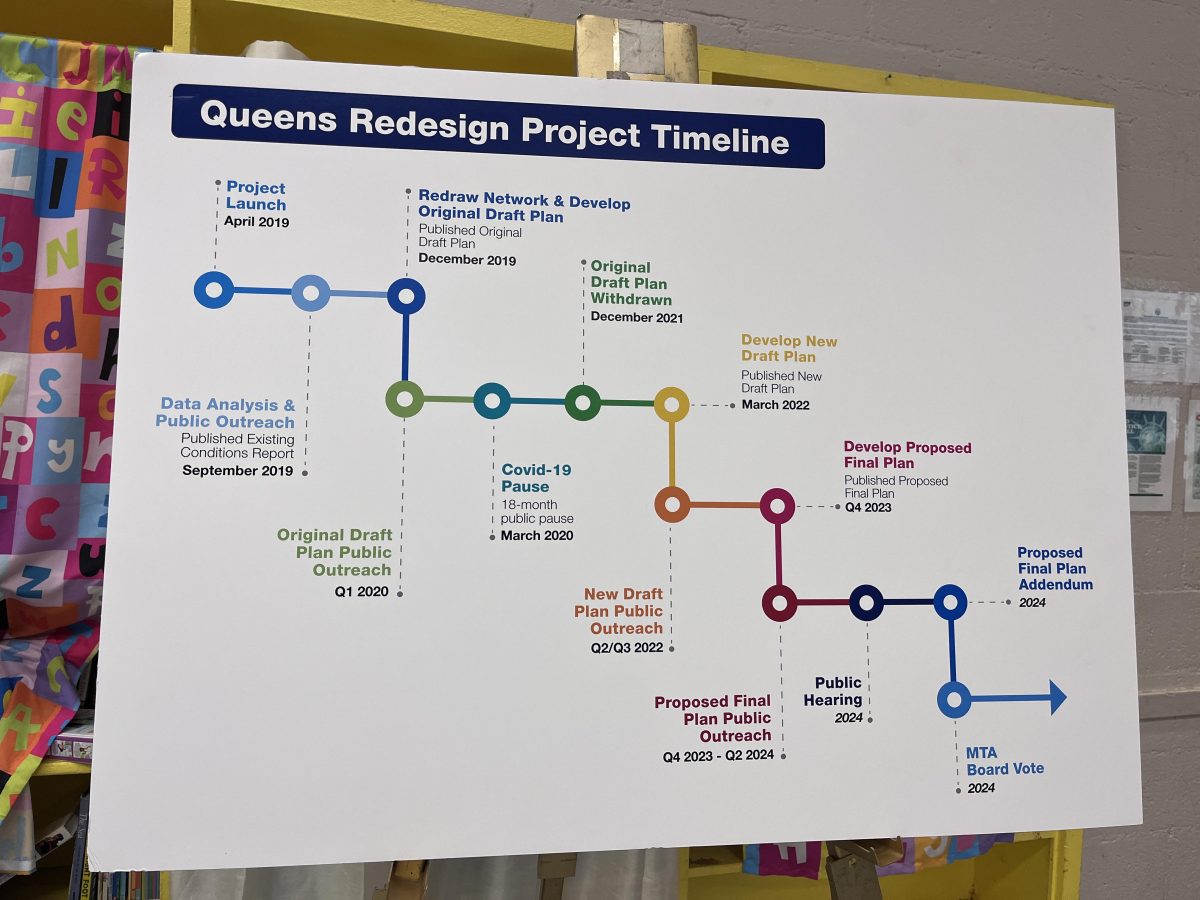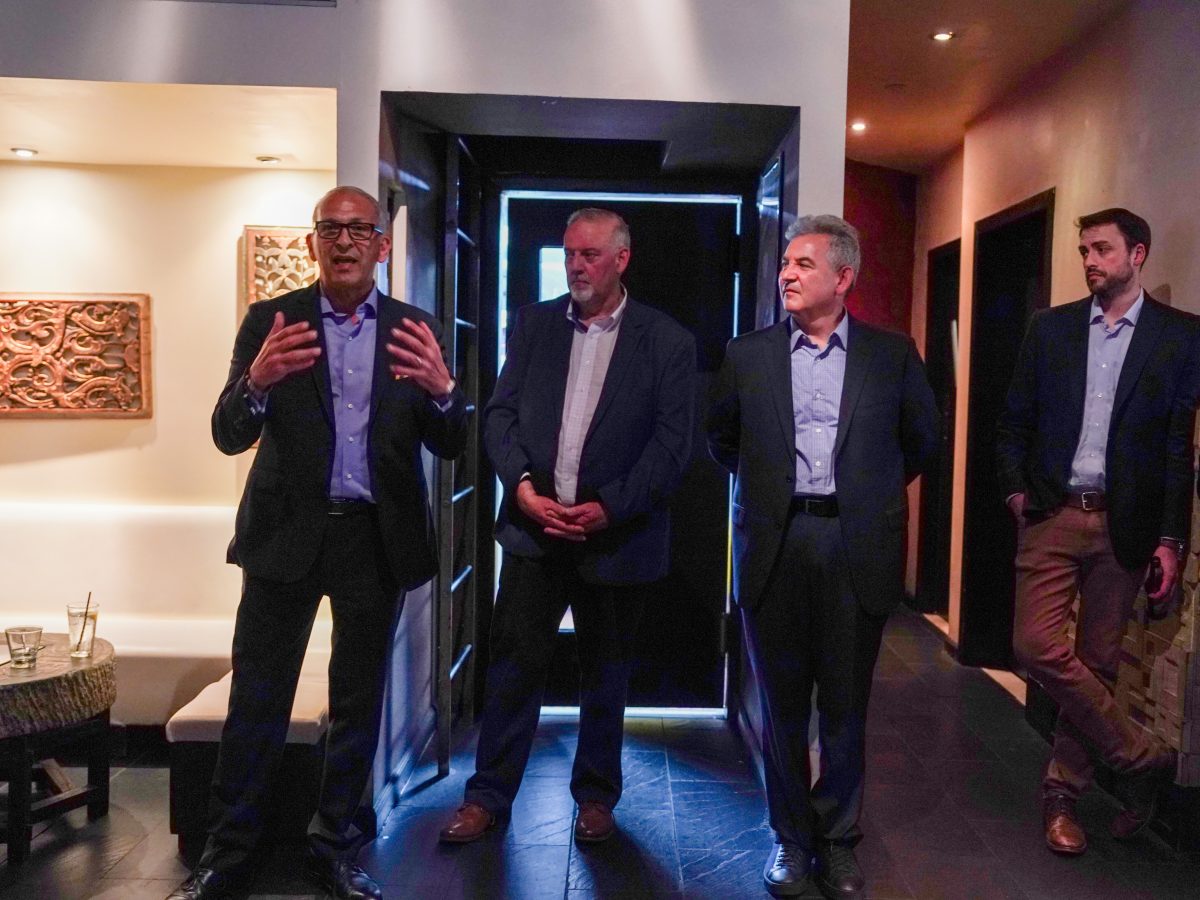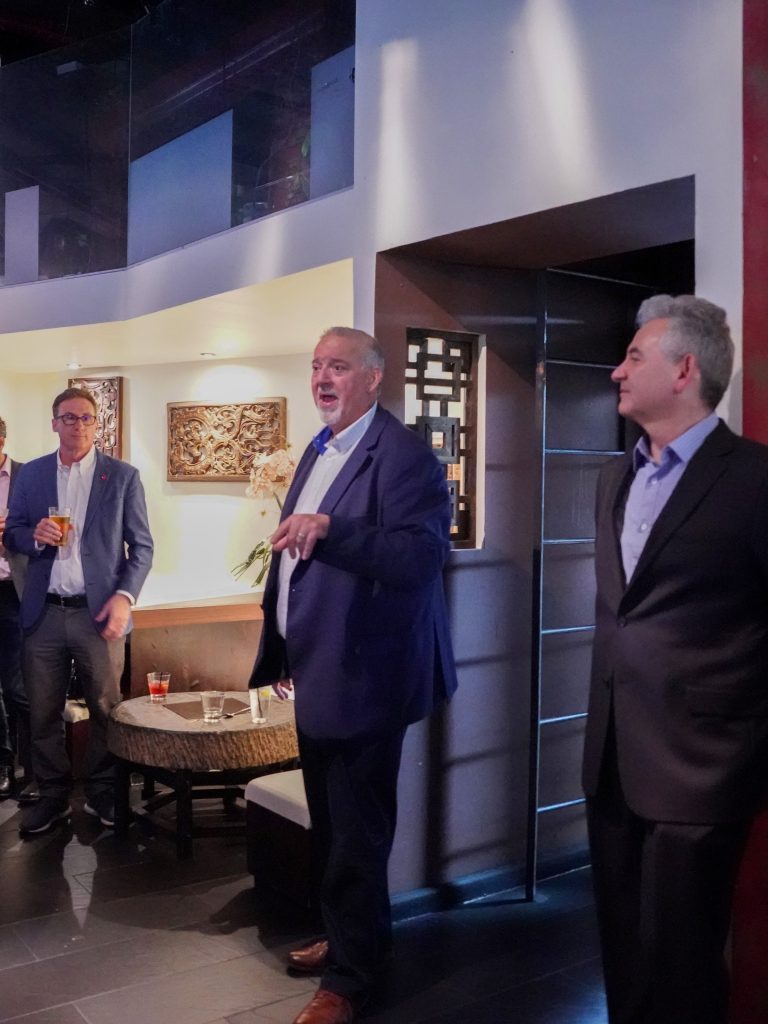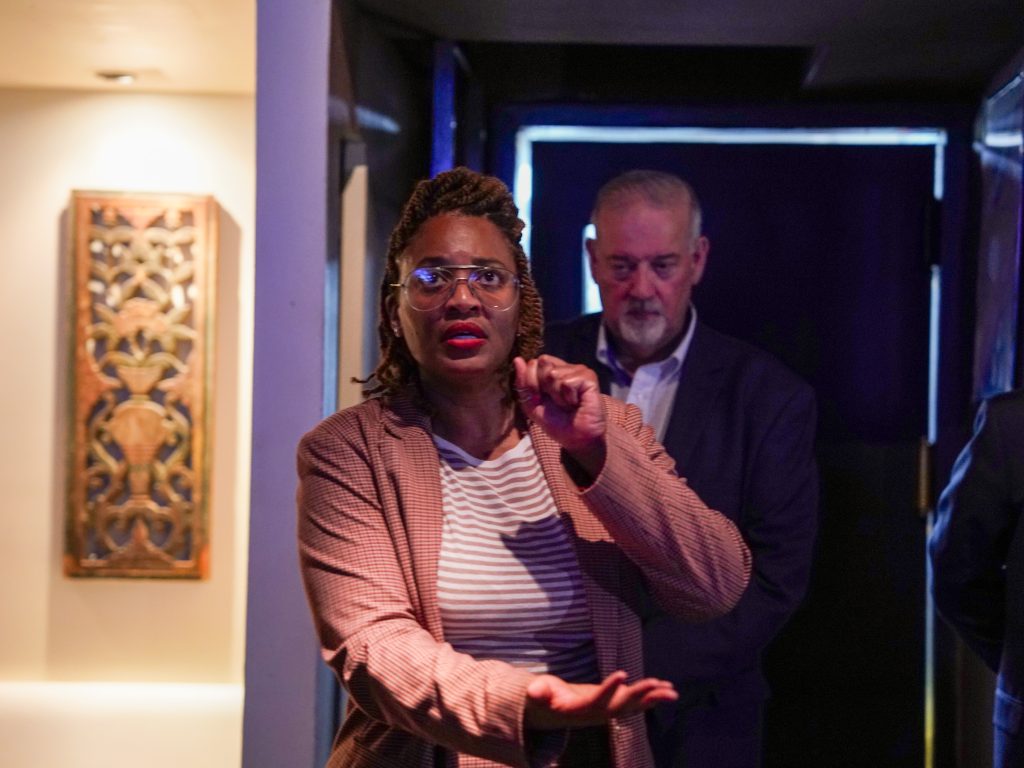Queens Residents Share Feedback at Queens Bus Redesign Open House
By Britney Trachtenberg britt@queensledger.com
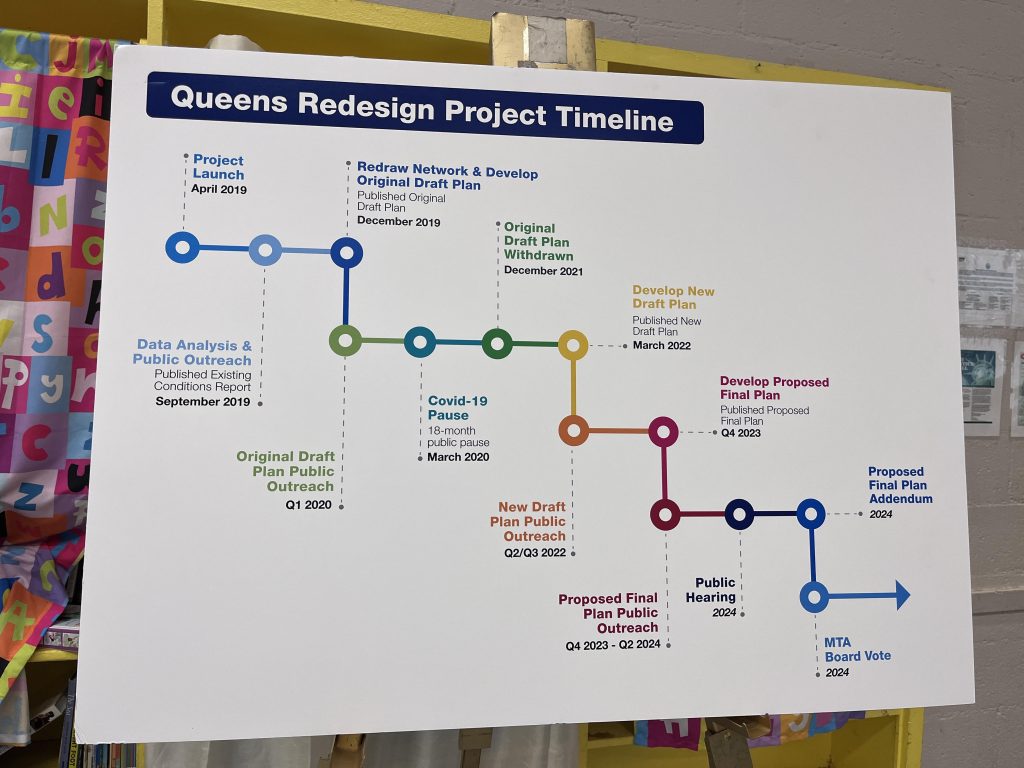
Staff members from the Metropolitan Transportation Authority (MTA) hosted a Bus Redesign Open House on Thurs., May 16 at the Variety Boys and Girls Club in Astoria. The transportation agency invited Queens residents to give feedback on the proposed plan to change bus routes across the borough. This open house occurred in the final stages of the redesign timeline.
The Queens Bus Network Redesign is the biggest bus network redesign project in the United States. After implementation, the redesign will change travel for the borough’s estimated 800,000 bus riders.
The MTA launched the Queens Bus Network Redesign initiative in Apr. 2019 and published the Queens Existing Conditions Report in Aug. 2019. The organization published the Original Queens Draft Plan in Dec. 2019. The project paused for 18 months due to Covid-19. The initiative resumed in Aug. 2021. The MTA withdrew the Original Queens Draft Plan in Dec. 2021 and published the Queens New Draft Plan in Mar. 2022. The transportation agency conducted outreach for the Queens New Draft Plan during the spring and fall of 2022. During the winter and fall of 2023, the MTA reviewed New Draft Plan feedback while developing the Proposed Final Plan. They released the Queens Proposed Final Plan in Dec. 2023. Throughout the fall of 2023 and spring of 2024, the MTA has conducted outreach for the Queens Proposed Final Plan.
MTA Spokesperson Lucas Bejarano said, “The MTA is redesigning all the boroughs’ bus networks by streamlining routes to deliver more efficient service, better match current travel patterns, reduce travel times, increase off-peak service, improve connections to the subway and commuter rail, and improve interborough connections. We continue to receive feedback from Queens bus customers on the Proposed Final Plan, which will be critical in crafting a bus network that delivers on those priorities.”
Members of the public asked the MTA questions about the bus route changes from 5:00 p.m. until 8:30 p.m.
Carol Wilkins of Ravenswood asked about the bus stop on 36th Ave. and 21st St. on both sides. She said, “I think they need to put the bus stop back. There’s nothing on 35th Ave. [and] nothing on 36th. That’s where all the stores [are] that everyone wants to go to [and] shop at before they go home from work. Now, they have to walk back a block [or] two blocks.”
Andrew Gallin of Astoria mentioned the Q69, which he took from his neighborhood to Queensbridge. He said, “The Q69 is really slow because it has so many stops, especially right before the transfer to the subway. There’s two stops on the same block, which I never understood.”
Residents from Manhattan also attended the open house. Louis Moore attended the event due to his interest in urban planning. Khyber Sen said, “I’m excited for a faster bus route. I often don’t take the bus because walking is just faster.” David Kupferburg said that he lived in Manhattan, but worked in Long Island City. He did not want the MTA to discontinue the Q100 bus route. He said, “I don’t take the Q100 per se, but I know how this neighborhood depends on it.”
Jessica Gonzalez-Rojas, New York State Assembly member for District 34, attended the event. She said, “As a state-elected official, one of my biggest platform issues has been public transportation. I used to be on the New York City Transit Riders Council and was appointed Rider Advocate, so public transit is a kind of passion of mine.” When asked about specific bus routes in District 34, Gonzalez-Rojas said, “I am looking very closely at the Q66 line. Most concerns I’ve heard from community members have been the removal of certain stops.”
Residents left comments about the MTA on comment cards. They received pamphlets about OMNY, the Open Stroller Pilot Program, the Fair Fares NYC initiative, and the MTA Reduced Fare Program.
Boards stationed around the room shared the MTA’s priorities, introduced the new bus network, and discussed the NYC DOT Better Buses program.
The MTA hoped to provide Queens residents with reliable service and improved intra- and inter-borough transfers. The agency hoped to create more connections to ADA-accessible subway stations as well.
The board about the new bus network talked about increased bus stop spacing to make the bus service faster and make the bus network more reliable.
Two other boards displayed the Proposed Local Bus Network map and the Proposed Network Frequency map.
Queens elected officials and the Long Island City partnership petitioned the MTA for a local bus route between Long Island City and Hunters Point through the Queens Midtown Tunnel as part of the Queens Bus Network Redesign. New York State Senator Kristen Gonzalez, Congresswoman Nydia Velázquez, New York City Council Member Julie Won, and Laura Rothrock, President of the Long Island City Partnership, wrote letters of support.
In her letter, Senator Gonalez wrote, “This route will benefit seniors, people with disabilities and parents with strollers unable to navigate the stairs at Vernon/Jackson station. We understand the MTA has plans to make ADA improvements to the Queensboro Plaza and Broadway subway stations. While these future improvements are welcomed, we cannot leave those with disabilities and accessibility needs without access to Manhattan until they are completed.”
Congresswoman Velázquez wrote in her letter that “Hunters Point is among the fastest growing neighborhoods in New York City, yet inadequately served by one subway station – Vernon/Jackson Boulevard on the 7-line – a station that lacks ADA accessibility and a train that is often crowded and experiences frequent delays. Providing an alternative to Manhattan that is accessible, especially with the implementation of New York City congestion pricing is needed now and more important than ever.”
NYC Council Member Won wrote in her letter, “My constituents have consistently called for increased public transportation options from our district in Western Queens to Manhattan, especially with the introduction of congestion pricing. We must have safe, fast, and reliable public transportation options that will allow our seniors, people with disabilities, and parents with strollers to commute to and from the city.”
Rothrock wrote in her letter “I’m writing on behalf of the small business community of Long Island City, specifically Hunters Point, one of the New York City’s fastest growing neighborhoods; home to numerous restaurants & bars, retail shops, service businesses and cultural institutions. Reliable, accessible and safe public transit is essential for small businesses & cultural institutions to thrive. Hunters Point is served by just one small non-ADA accessible subway station (Vernon/Jackson 7 line). When 7 trains are delayed or shut down, the neighborhood is cut off from the center of Manhattan.”
Long Island City resident Beverly Brown started an organization called LICBUS in 2022 to advocate for the Hunters Point/LIC-Midtown Tunnel bus line.
The Brooklyn Bus Network Redesign will come after Queens with the release of its Final Plan.




